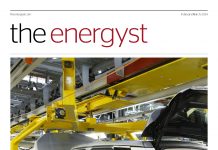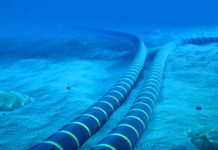 The container shipping industry is an ever-growing, fast-paced environment, and power infrastructure cannot always grow in-line with power requirements. For this reason, many container ports are choosing to expand their power capacity by using stand-alone temporary power solutions, such as diesel generators, rather than waiting for additional power infrastructure.
The container shipping industry is an ever-growing, fast-paced environment, and power infrastructure cannot always grow in-line with power requirements. For this reason, many container ports are choosing to expand their power capacity by using stand-alone temporary power solutions, such as diesel generators, rather than waiting for additional power infrastructure.
This is often the best way to secure additional crane power, thereby increasing the number of containers that can be moved simultaneously. It does, however, come with the downside of producing ‘regenerative power’. This means that power is returned to the generator when the crane is lowering load – which can have a catastrophic effect on the generator.
Hutchison Ports is a leading port investor, developer and operator with a network of port operations in 52 ports. Working in Karachi, Pakistan, the Crestchic team collaborated with the on-site team to help specify a solution which would stop the regenerative power from reaching the diesel generators. Using two medium voltage load banks, Crestchic have been able to divert regenerative current to the load bank, ensuring the generator is left undamaged.
The installation of the load banks also acted as a tracker, which allowed the load banks to automatically apply load to the generators when running on light load, such as during the night. This is an essential maintenance safeguard as it helps to sustain fuel and generator efficiency; automatically shedding load to the generators as site load increases.
Paul Brickman, Sales and Marketing Director at Crestchic said: “Like most of its ports across the globe there was a need for downtime to be kept to a minimum, while productivity needed to be kept a priority. Crestchic’s loadbanks provided the solution needed, fulfilling all the requirements asked and delivery of a successful result.”
Finally, there was a need for a normal loadbank to be provided with the capability of applying 4000kW onto the generators for generator maintenance or commissioning new parts.


